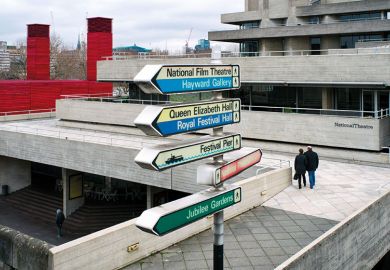Universities may be places in which people live the life of the mind. But there is increasing evidence that university environments often detract from that life, rather than enhance it.
Health and well-being are not luxuries. They are essentials. They are the roots of human productivity, determining our ability to perform both physical and mental work efficiently and creatively. Nurturing them should be viewed as an investment, not a cost.
Our vocabulary in the field of health and well-being is changing to embrace a wider span of meaning. Recently, the Danish word hygge, meaning cosiness, entered the English language. Now the Japanese word ikigai is following its lead. Literally translating as “life-value”, it denotes the recognition of the things that make life worthwhile.
Within organisations, well-being depends partly on management ethos. Centralised management structures, for instance, tend to detract from it, since people work better when they have some degree of ownership of their daily tasks. And one of the sorrows of the age is that digital technologies, whose introduction promised to speed up administration, require such pinpoint accuracy in inputting data that they actually make it even more time-consuming, irritating and creativity-sapping.
Moreover, while digitalisation quickly links us with family, friends and colleagues all over the world, the same method is used to connect with colleagues in the next office. This means that the simplest of tasks, which used to require a decision between two or three people at most, now has to pass through several more layers. One can only hope that the virtual digital assistants that are emerging will save us from this curse.
Another factor affecting well-being in organisations is their social ambience. But this depends not just on the individuals within them but also on their architectural layouts. “Face to face” is the best way of enjoying social interaction, and we need co-working spaces for teamwork. But we also need quiet spaces for other kinds of work. Latching on to fashions such as hot-desking is not the answer.
Advances in medicine and neuroscience suggest that the interaction between humans and buildings is more complex and more significant than we previously imagined. In addition to the simple reactions that we can measure, there are many sensory and psychological reactions to the physical environment that are difficult to understand and quantify, but that we must recognise occur and make an important contribution to well-being (or its absence).
Warm stuffy conditions can sap energy. A lack of daylight can be depressing. Several studies have shown that people who work in environments featuring natural elements, such as greenery, natural materials and sunlight, report higher levels of well-being, productivity and creativity. With that in mind, a building at Yonsei University in South Korea features internal gardens and an internal entrance made of bamboo.
A diverse environment that engages the human sensory system is also stimulating to creativity. That may mean artwork on walls, views to the outside or different colour tones – although it can also mean a certain amount of “creative clutter” or untidiness if not arranged in an orderly way.
Environmental factors such as temperature, ventilation, light levels, moisture and sound can be measured using traditional environmental measuring instruments. But some companies are issuing wearable technologies to their employees, which allows individuals’ physiological, mood and stress states to be monitored alongside the physical environment. Could universities – whose researchers pioneered many of these technologies – apply such an approach to their own environments? It would be important to develop trust between managers and employees on the use of data, but good use of it could lead to significant improvements in the work environment.
The arrangement of physical spaces also plays an important role in communication between people. In his 2017 book, The Origins of Creativity, E.O. Wilson articulates the view that creativity is sparked when people from disparate disciplines interact and discover unusual and unexpected pathways of connectivity between their specialisms. This transdisciplinary approach offers a way of dealing with wicked problems by applying collective thought that harnesses multiple, detailed ways of understanding that contribute to a greater whole.
Should universities consider reorganising their traditional faculty structures to recognise this? Commercial office space, for instance, is becoming more fluid and flexible; in some workplaces, everyone uses an app to plan their day, including where to sit and in what configuration. Is this unrealistic for universities to consider?
An example of a space designed to nurture creativity is the Rawthmells Coffeehouse at the Royal Society of Arts in London. Opened in 2018, it incorporates all-day dining, various patterns of spaces and changing wall displays on which people can write ideas. The coffee house culture is nothing new, of course; it has been prevalent in Paris, Vienna and Budapest for centuries. But could it also work in universities, providing a variety of spaces that make it easy to meet and share ideas – or to be alone?
Spaces can energise or demotivate people. But are university planners sufficiently conscious of the implications of this for the buildings they design? Or is it short-term costs that dictate outcomes, rather than value to students and staff?
The apparent mental health crisis among academics and students suggests that some hard questions need to be asked.
Derek Clements-Croome is emeritus professor of architectural engineering at the University of Reading and a visiting professor at Queen Mary University London. His latest book, Buildings for People, will be published by Crowood Press in the spring.
POSTSCRIPT:
Print headline: Design for living
Register to continue
Why register?
- Registration is free and only takes a moment
- Once registered, you can read 3 articles a month
- Sign up for our newsletter
Subscribe
Or subscribe for unlimited access to:
- Unlimited access to news, views, insights & reviews
- Digital editions
- Digital access to THE’s university and college rankings analysis
Already registered or a current subscriber?







